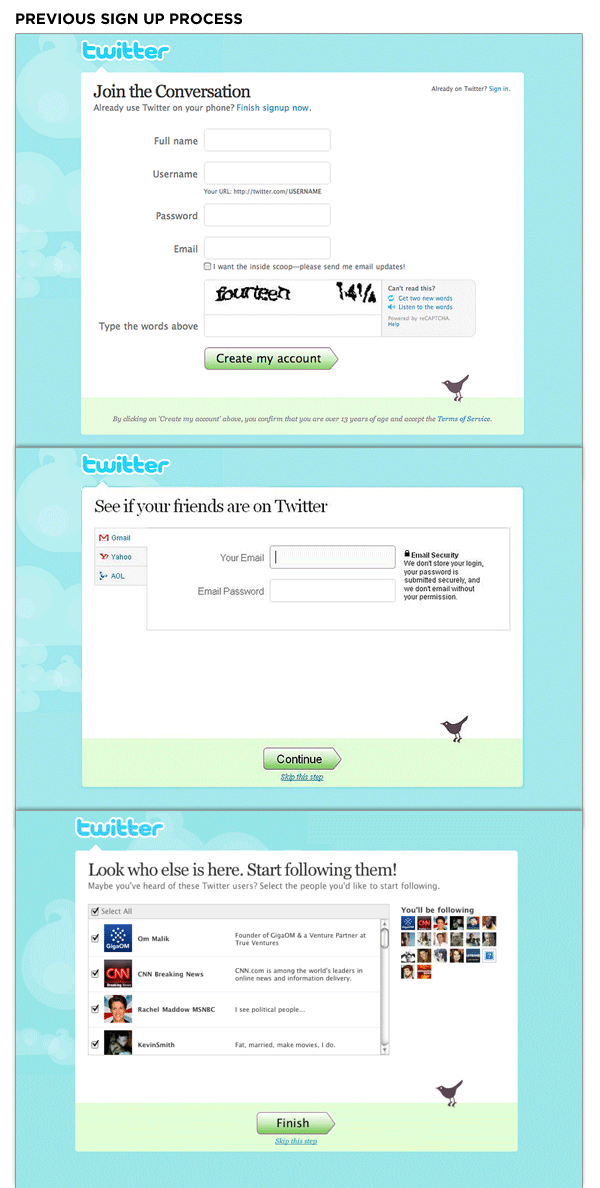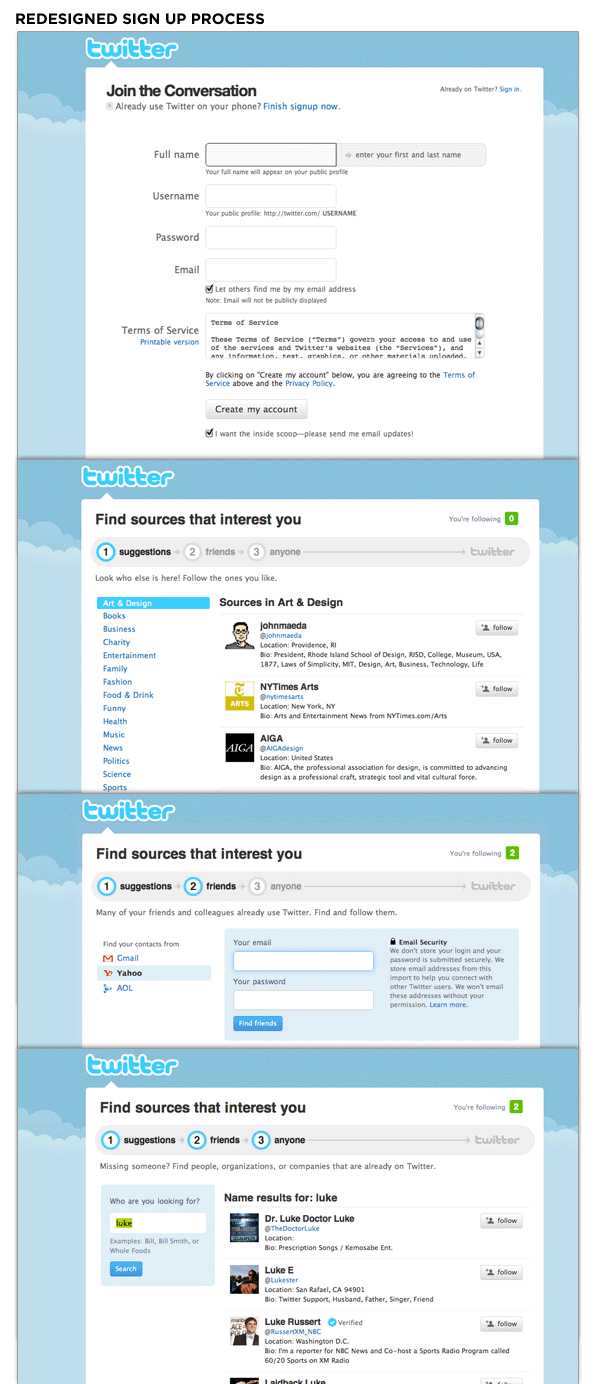Twitter recently redesigned their sign-up process to boost new user engagement. Though the new sign-up process added one more screen, conversions went up 29%. How? Gradual engagement.
Gradual engagement is the process of moving a user through an application or service – actually engaging with it, and seeing it's benefits. With gradual engagement, new users are not just presented with a registration form and then dropped off a cliff (typical process in many Web applications). Instead, registration is either postponed, or handled behind the scenes and the first time experience is focused on giving people an understanding of how they can use a service and why they should care to.
When done right, gradual engagement communicates the core essence of a service with a few lightweight interactions. If you can make people successful along the way—even better. Will Wright, the creator of the Sims & Spore, has a belief that games should allow people to succeed within the first five seconds. That's a great philosophy to bring to gradual engagement. In fact, I think if you can use lightweight actions to allow people to accomplish something relevant to the core of your product within their first one or two interactions with your service, that's gradual engagement at its finest.
Through their user research, Twitter found that while celebrities (and their tweets) were a big reason people came to Twitter, they did not keep them there. Instead, what kept users on Twitter was the things they were passionate about - hobbies, conversations with subject-matter experts, and friends. This was the core essence of the service that a gradual engagement approach needed to deliver.

Twitter's previous sign-up process didn't hit the mark. If new users opted to sign-up from the home page, they were greeted with a registration form where they:
- Had to create a Twitter account
- Were asked to find friends on Twitter by logging into a Web mail account
- Were presented a selection of the most popular Twitter users with an ability to follow each one
- And finally, if they didn't find anyone to follow or skipped the previous two steps, a blank home page prompting them to tell Twitter "what they were doing".
In the redesigned sign-up flow on Twitter, the first thing people see after creating an account is a set of topics they may be interested in. These topics are organized by the most popular (music, entertainment, fashion, and art & design) and also include current events (programmed by editors at Twitter).
In the previous sign-up process, new users were seeing things that were random (most popular), now the first thing they do is curate what they care about. Which is the core essence of Twitter and, as a result, a great approach to gradual engagement. In the redesigned flow, people new to Twitter start by following topics they care about (with a few lightweight interactions) and are much less likely to end up with empty home screens.

In fact, even though Twitter's new sign-up process is four steps (instead of three) and therefore more time consuming, it has increased completions 29% and the people who complete the flow are much more engaged on Twitter.
Personally, I'd be really curious to see what would happen if account creation were postponed until after people started following the topics and friends they cared about. Currently it comes first and (therefore) before people get direct personal value from Twitter. As I mentioned earlier, a complete gradual engagement approach would postpose or relegate account creation to the background.
More About Twitter's Sign-Up Redesign
Twitter's head of user research, Mark Trammell, discusses Twitter's approach to gradual engagement and the changes referenced above in his talks at the Web App Masters Tour in San Diego (notes from his talk) and Philadelphia (notes from his talk).
More About Gradual Engagement
Getting people through a form is just one way to gather information. On the web, however, forms are often the de facto choice for data requests. But it doesn’t have to be this way. Instead of throwing a web form in front of people every time we need some information, we can turn instead to the principles behind gradual engagement.
Gradual engagement allows us to gather information from people in a way that gets them involved in our web applications. If done right, gradual engagement can also educate people on the benefits and features our applications provide.